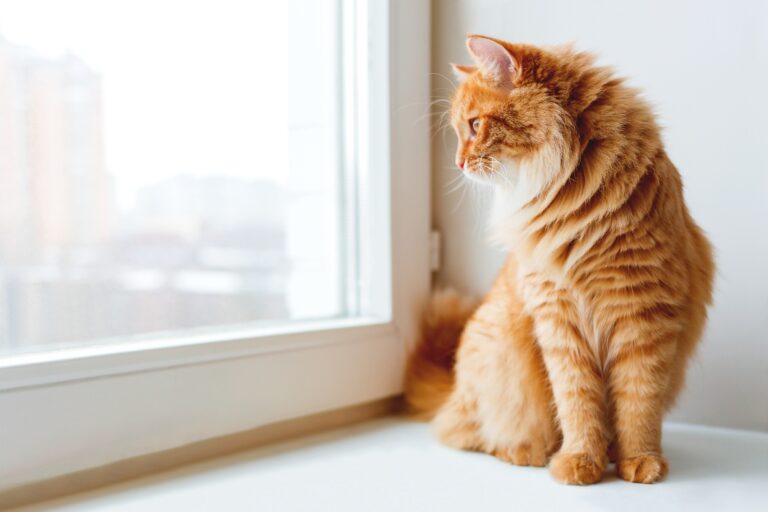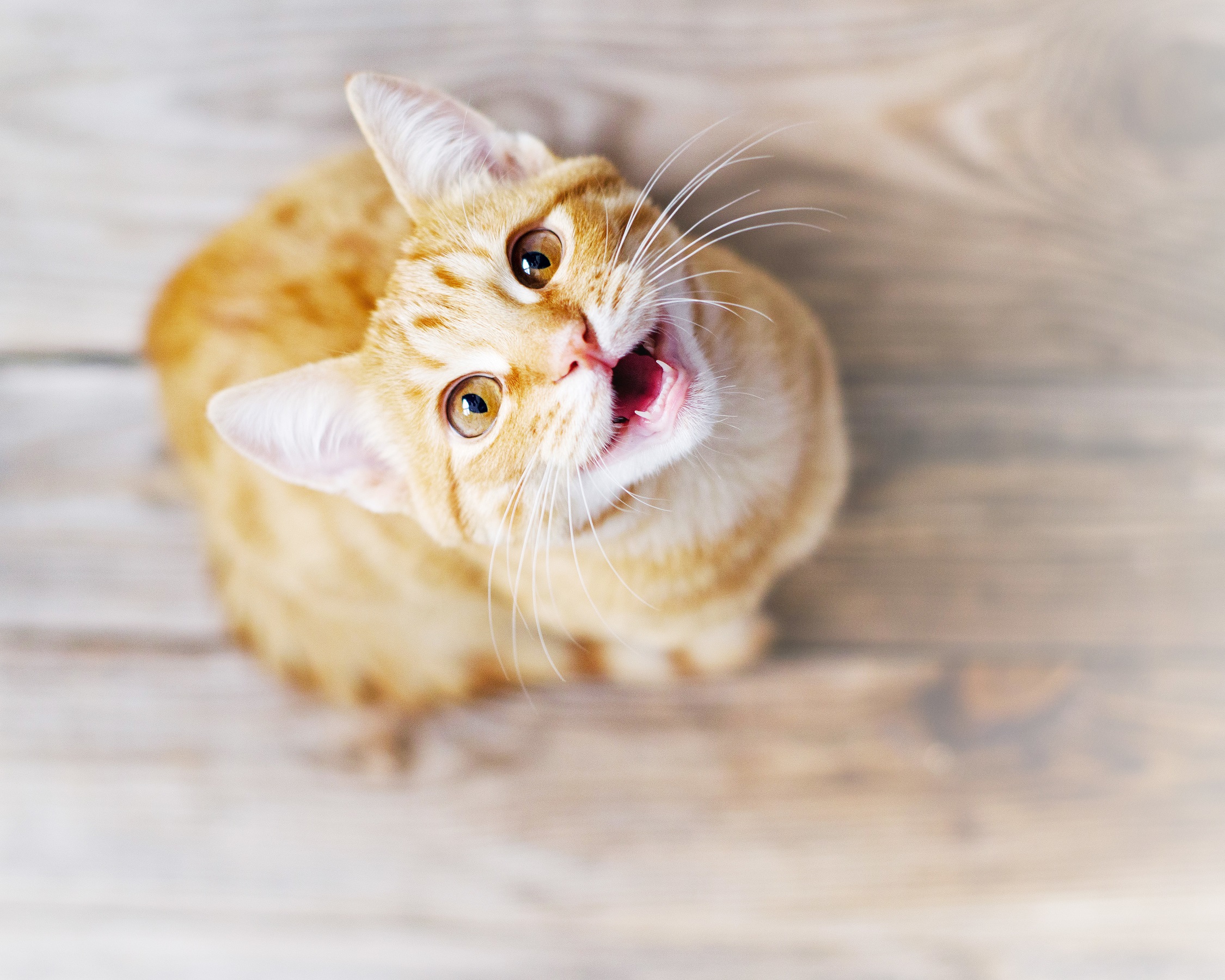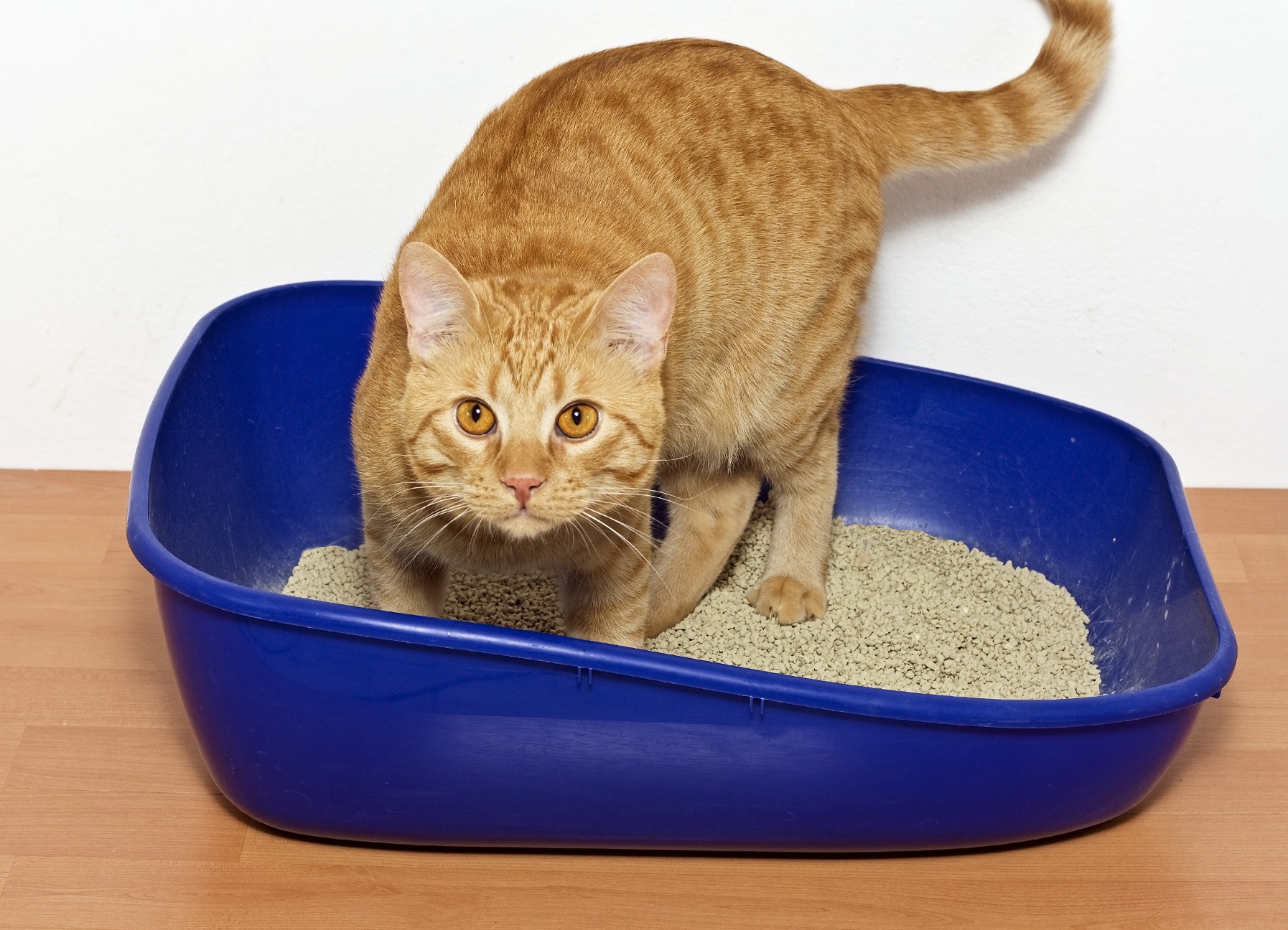Cat sounds: what miaowing, purring and hissing really mean
Cat sounds are varied and act as a tool to express feelings. The most well-known are miaowing, purring and hissing. This article translates the most important sounds into human speak.
Marking with urine is a natural means of communication between cats. However, it can be very unpleasant for their owner if they mark in your home and leave their scent on the walls, furniture or windows. Why do some cats mark within the four walls of your home and how can this behaviour be avoided?

© Konstantin Aksenov / stock.adobe.com
Whilst we are still amused outside watching how our cat sprays the garden fence with its urine with a stretched-out, trembling tail and signals to the neighbour’s cat that this is its territory, we don’t find this behaviour funny at all inside our own home. Understandably, because cat urine smells awful indoors and won’t just become a serious problem for humans and their sense of smell in the long term. But why do some cats mark in the home? What do they want to say to us? Indeed, cats should no longer need to mark at home. After all, no other cat (apart from households with multiple cats) will challenge them for this territory, right?
However, the issue of marking isn’t so straightforward, because there isn’t always a territory conflict behind this behaviour. We previously believed that cats simply marked the border of their territory with their urine, but behaviour researchers nowadays assume that cats also use marking as a means of communication with fellow felines.
Urine acts as a kind of visiting card for cats that reveals a lot about them. We humans can only guess what messages cats use to communicate amongst each other, but they probably show other cats who they are (male or female), where they were, whether they are healthy or stressed, ready to breed or wish to be left in peace.
Compared to castrated males and neutered females, unneutered males mark most often of all. This would indicate that marking is often linked to reproduction. Males which to draw the attention of females in the neighbourhood to them and signal “hey, I’m ready!”. Hence, the urine contains information on sexual status and should trigger the female’s willingness to mate.
However, males and females don’t always wish to impress the opposite sex with their urine. Sometimes it’s actually about territorial requirements. Urine allows them to signal to their competition: “This spot belongs to me! Paws off!”. Outdoors, for instance, these are promising hunting areas or shady spots to rest. At home they are feeding areas, the sofa or a cosy place to retreat. There are plenty of coveted resources in their territory, which aren’t just marked by uncastrated mates, but females (neutered and unneutered) and castrated males too.
Nevertheless, cats sometimes also mark without having their territory or the opposite sex on their mind. This usually occurs due to uncertainty, stress and loss of composure. Even if cats themselves aren’t aware of this, they unconsciously reduce stress by urinating. Marking with urine is therefore a kind of means to vent. This leapfrog behaviour is usually triggered by unsatisfied needs: a cat wants to go outside but the door remains closed. It is hungry but its food bowl remains empty. It wants to be alone and have space, but a loud party is taking place in its home. However, changes to their customs can also unsettle sensitive cats and lead to marking out of stress: moving to a new home, a renovation, a new sofa, a new carpet or the birth of a baby. Sometimes even little things suffice, such as using a new cat litter, an unusual smell (such as old sports clothing) or a new cat food variety.

The first thought of cat owners who discover their cat’s urine in their home for the first time is: “My cat is unhygienic”. In this sense, there are big differences between a lack of hygiene and marking. The causes of unhygienic behaviour are mostly related to the litter box, such as the new litter being rejected, the box being in an inconvenient location with too much activity close by, or the litter box is cleaned too little or with an unpleasant cleaning product. In contrast, cats don’t necessarily reject the litter box with marking. Many cats that mark continue to use their litter box. Whilst unhygienic cats look for the carpet, sofa or bed as a replacement toilet where they can relieve themselves, marking serves as a communication signal rather than to urinate. However, different causes are known to require different measures: in order to contain the smell of urine in your home in the long term, it’s important to first recognise whether your cat really is marking or whether it is unhygienic.
The quantity of urine in the home is usually lower with marking than with a lack of hygiene. Nevertheless, this isn’t the case with all cats and the difference can’t always be recognised by quantity alone. The clearest sign of whether urinating has to do with a lack of hygiene or marking is the cat’s body language. Whilst cats usually squat slightly when urinating (bear in mind though that this isn’t the case with all cats!) and then try to bury their urine with their paws, they behave differently when marking. They first sniff the spot they wish to mark, then turn their back, stretch their trembling tail upwards, traipse a little with their rear legs and then spray their urine more or less horizontally. Unlike with normal urinating, it first lands on a horizontal surface such as the wall, door frame or sofa armrests before then falling to the floor.
If you don’t catch your cat in the act and only discover puddles on the floor later on, you should see whether you can still find traces of urine on the vertical line starting next to it. Whilst we usually only find urine on vertical surfaces like carpets, beds or sofas with unhygienic cats, typical marking areas are instead horizontal objects, such as windows, doors, curtains, walls, table and chair legs or sofa armrests.
If you discover more of your cat’s urine in your home, you should first schedule an appointment with your vet, because there could be a medical problem such as a urinary tract infection behind both a lack of hygiene and marking. Hence, always get your cat examined for possible diseases first of all before taking measures against annoying urination.
Are you sure that your cat is marking and isn’t unhygienic? Then you’ve managed the first step and should now focus on the causes of this behaviour. Unfortunately these can be varied and you certainly won’t be able to solve the matter overnight. You can’t always avoid stressful situations, especially if your cat marks due to agitation. You can’t reverse a house move and a new sofa can no longer be exchanged for the old one. Nevertheless, you can do something so that your cat feels happier at home again, because relaxed cats mark much less than stressed, tense cats.
Discover our selection of anti-stress products for cats!
Regardless of the triggers of stress and your cat marking with its urine, it now needs more reassurance! If you punish it for its behaviour, you will only reinforce its insecurity and marking behaviour. Instead, pay your cat more attention, play with it, stroke it or simply be close by – as long as it wants this. However, give it the opportunity to retreat if ever things get too hectic.
Good results are also possible with special plug-in fragrance atomisers or sprays. They spray synthetically recreated pheromones into your home, meaning neurotransmitters produced naturally in the cat’s body that encourage the wellbeing of our felines. Pheromones of the mother cat that the mother gives off when her kittens suckle, for instance, send the unconscious message that everything is OK and that the cat should relax. This often manages to significantly reduce the cat’s increased stress level. At the same time, you should avoid everything that could frighten or confuse your cat if possible. Stick to the tried-and-tested cat letter, don’t experiment with food, clear away furniture or clothing with a strong smell and ideally have any loud parties outside – provided that your cat reacts sensitively to such smells and noises.
It’s crucial that you recognise your cat’s needs and satisfy them within good time before they become too overpowering and your cat seeks an outlet for them in marking. If you have an outdoor cat in your home, let it out whenever it wishes. Offer activity or attention if it asks for them. Provide a clean litter box in a pleasant place for your cat where it can relieve itself in peace and far away from hustle and bustle. If your cat begs for food a lot and hunger triggers its tension, you should reconsider how to feed it. Your cat’s natural eating behaviour consists more of regular snacking than a few small individual portions. If you have not already done so, you could spilt the daily feeding quantity into several meals and offer small portions more frequently so that hunger and stress do not become overwhelming.

The need for calm is also important to many cats. They need an area that only belongs to them: their own cat basket, their own litter box, a little den under the bed, in the cupboard, behind the couch or a quiet corner in the basement. Particularly in households with multiple cats, these sought-after places are gladly fought over and these battles for territory quite often end in marking. If you have several cats in your home, you should increase the number of litter boxes if required, provide more places to retreat and mark them out and distribute them better. If a neighbour’s cat often comes to visit and your cat may feel perturbed by this, limit its access. This also helps if readiness to reproduce is behind your uncastrated male or unneutered female marking. Some cats also need a privacy screen outside in order to set themselves apart from the competition in their own home.
Another option to contain your cat’s need to mark is not to exaggerate when it comes to cleaning your home. Heavily perfumed chlorinated or ammoniacal cleaning products don’t just damage the environment, but can also soon become too much for sensitive feline noses. Their need to cover up the smell they find unpleasant with their familiar urine smell will only increase. Of course cats don’t leave their scent behind solely in their urine. Rubbing their head against furniture and people also spreads their scent and increases their feeling of being at home. If you immediately wipe out these markings, which for you are odourless, with an aggressive cleaning product, this could also trigger marking with urine. This obviously doesn’t mean that you should let your home go to rack and ruin. Cats are extremely clean animals and like unhygienic areas just as little as you do. However, you’re best off just using water to clean or if possible odourless cleaning products. This applies in particular for regular cleaning of litter boxes and changing cat litter.
Sometimes it takes a long time for the aforementioned measures against marking to show the desired effect. Especially with cats that have already been marking for a long time, this already established behaviour won’t change straight away. So be patient with your cat! Of course this doesn’t mean that you should idly watch it marking. If possible, reinforce your assistance, pay even more attention to your cat’s needs, pay it more attention, buy plug-in pheromones or sprays and make sure that your cat feels at ease with you.
Unfortunately sometimes the greatest efforts don’t help and your cat won’t stop marking. If your cat isn’t castrated or neutered and sexual hormones trigger marking with urine, you should discuss the possibility of castration or neutering with your vet. However, it can take a few weeks for castrated or neutered cats to set aside sexual behaviour and to stop marking. If your cat is older and marking has already become a firm habit, castration or neutering alone can often not solve the problem. If castration or neutering aren’t an option for you or your cat has already been castrated and neutered for a long time but the problem with marking continues unabated, you should seek expert help. Talk to your vet or contact a professional feline behavioural consultant or therapist. This can often reduce the time needed to solve the problem with marking.
Here are some purchase proposals curated by the zooplus editorial team
The products featured have been carefully selected by our editorial staff and are available at the zooplus online pet shop. The selection does not constitute advertising for the mentioned brands.
Cat sounds are varied and act as a tool to express feelings. The most well-known are miaowing, purring and hissing. This article translates the most important sounds into human speak.
Cats are naturally curious creatures. That being said, not every cat trusts people. This is especially true when cats grow up without contact with humans or have had negative experiences with people. Gentle handling of a scared cat is key.
Sleepless nights because your cat meows at night? Presumably every cat owner has experienced this. But what should we do if our cat robs us of sleep every night with its meowing? Why do many cats meow particularly at night and what helps combat nightly cat woes?